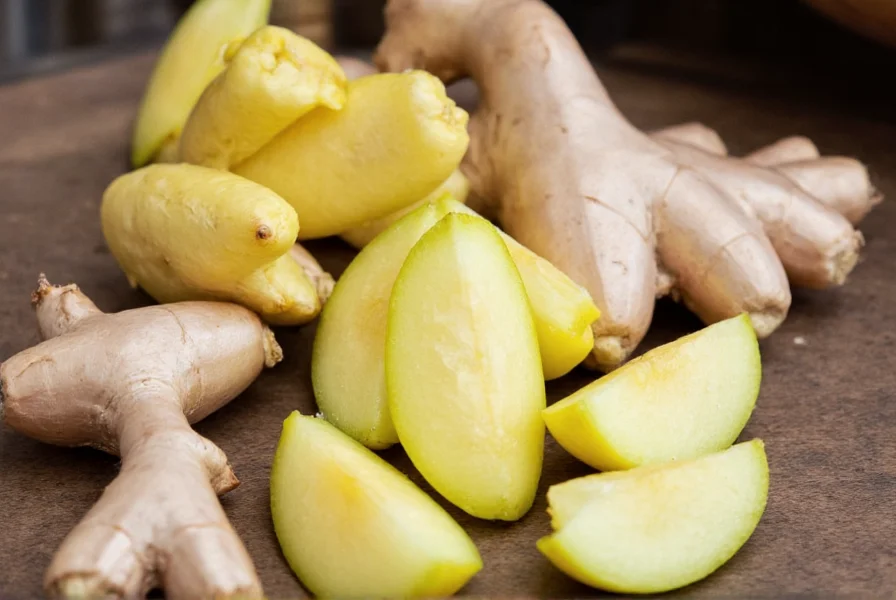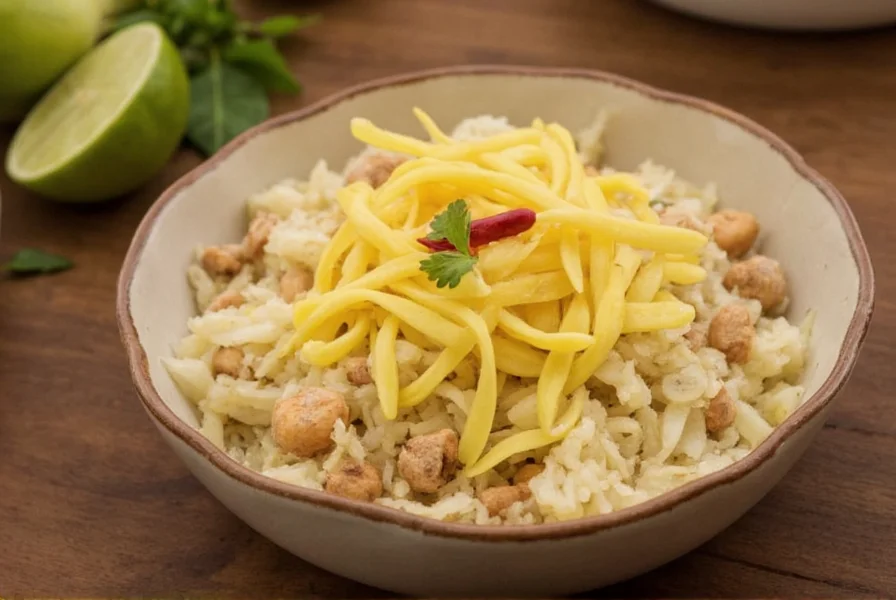Preparing ginger properly can transform your cooking experience. Whether you're making Asian cuisine, baking ginger cookies, or brewing ginger tea, knowing how to handle this versatile root correctly ensures maximum flavor and ease of use in your recipes.
Choosing the Right Ginger Root
Before learning how to prepare ginger, selecting quality ginger is crucial. Look for roots that feel heavy for their size with taut, shiny skin. Avoid pieces with soft spots, wrinkles, or mold. Young ginger has thinner skin and is more tender, while mature ginger has a stronger flavor and thicker skin that requires more thorough peeling.
Essential Tools for Ginger Preparation
You don't need specialized equipment to prepare ginger properly. Most home cooks can use basic kitchen tools:
| Tool | Best For | Alternative Options |
|---|---|---|
| Spoon | Peeling ginger skin | Vegetable peeler |
| Microplane grater | Fine grating for sauces | Box grater, zester |
| Sharp chef's knife | Slicing and chopping | Paring knife |
| Mortar and pestle | Traditional ginger paste | Food processor |
Step-by-Step Ginger Preparation Methods
How to Peel Ginger Without Wasting Precious Flesh
Many people waste valuable ginger when peeling. The most efficient method uses a spoon:
- Rinse the ginger root under cool water
- Use the edge of a teaspoon to gently scrape away the skin
- Follow the natural contours of the ginger root
- Work from top to bottom, rotating as needed
This technique removes only the thin outer layer without taking excess flesh, preserving more of the flavorful ginger. For how to peel ginger without a peeler, this spoon method is ideal as it requires only a common kitchen utensil.

Grating Fresh Ginger Properly
Grated ginger releases maximum flavor into dishes. For the best results:
- Cut a small section from the ginger root (about 1-2 inches)
- Peel using the spoon method described above
- Hold the ginger firmly and use a microplane grater
- Grate using downward motions away from your hand
- Rotate the ginger as it shortens to maintain control
For the best way to grate fresh ginger, keep your fingers clear of the grater's sharp edges and work over the container where you'll use the ginger to minimize cleanup.
Slicing and Julienne Techniques
Thin slices work well for tea, while matchstick cuts (julienne) are perfect for stir-fries:
- Peel the ginger root completely
- Cut crosswise into thin rounds (1/16 to 1/8 inch thick)
- Stack several rounds and cut lengthwise into thin strips
- Gather strips and cut crosswise for small diced pieces
For crystallized ginger or tea, leave slices thicker (about 1/4 inch). Always cut against the grain of the ginger fibers for tender results.
Storing Prepared Ginger
Proper storage extends ginger's shelf life significantly. For how to store prepared ginger, consider these methods:
- Refrigerator method: Place peeled ginger in an airtight container with a damp paper towel. Change the towel every 3-4 days. Lasts 2-3 weeks.
- Freezer method: Freeze whole or sliced ginger in a freezer bag. Grate frozen ginger directly into recipes without thawing. Lasts 6 months.
- Vinegar method: Submerge peeled ginger in rice vinegar in a sealed jar. Changes flavor slightly but preserves for 1 month.
Common Ginger Preparation Mistakes to Avoid
Even experienced cooks make these errors when preparing ginger:
- Using a vegetable peeler that removes too much flesh
- Grating ginger that's too large to handle safely
- Not washing hands thoroughly after handling (can cause eye irritation)
- Using dried-out ginger that lacks flavor and is difficult to work with
- Adding ginger too early in cooking, causing bitterness
Creative Uses for Prepared Ginger
Once you've mastered different methods to prepare ginger for cooking, try these applications:
- Add freshly grated ginger to morning smoothies for digestive benefits
- Infuse simple syrup with ginger slices for cocktails and desserts
- Mix grated ginger with honey for a natural sore throat remedy
- Create ginger paste with equal parts ginger and oil for quick cooking
- Add thin slices to hot water with lemon for soothing tea
Troubleshooting Ginger Preparation Issues
Encountering problems with your ginger? Try these solutions:
- Fibrous texture: Use younger ginger or grate rather than chop for smoother results
- Too spicy: Remove the outer layer completely and use less than recipe suggests
- Difficult to peel: Soak ginger in warm water for 5 minutes to loosen skin
- Bitter after cooking: Add ginger later in the cooking process

Conclusion
Mastering how to prepare ginger properly enhances both the flavor and texture of your dishes. By selecting quality ginger, using appropriate preparation techniques, and storing it correctly, you'll maximize this root's culinary potential. Whether you're following traditional Asian recipes or experimenting with new flavor combinations, properly prepared ginger adds a distinctive zing that elevates countless dishes. Remember that practice improves your technique—soon you'll be preparing ginger with confidence and efficiency.
What's the easiest way to peel ginger without special tools?
The easiest way to peel ginger without special tools is using the edge of a spoon. Simply scrape the skin off with the spoon's edge, following the ginger's natural contours. This method removes only the thin outer layer without wasting valuable ginger flesh and requires no special kitchen equipment.
How long does prepared ginger last in the refrigerator?
Properly stored prepared ginger lasts 2-3 weeks in the refrigerator. Place peeled ginger in an airtight container with a damp paper towel, changing the towel every 3-4 days. For longer storage, freeze ginger in a freezer bag where it will last up to 6 months and can be grated directly from frozen.
Can I use a cheese grater for ginger?
Yes, you can use a cheese grater for ginger, but a microplane grater works better for finer results. If using a box grater, choose the smallest holes for best results. Always grate ginger away from your hand and consider wearing a cut-resistant glove for safety, as ginger can be slippery when grating.
Why does my ginger taste bitter after cooking?
Ginger can taste bitter if added too early in the cooking process, especially when exposed to high heat for extended periods. To prevent bitterness, add ginger later in cooking—typically in the last 5-10 minutes for stir-fries or when making sauces. Fresh, high-quality ginger is less likely to become bitter than older, dried-out ginger.











 浙公网安备
33010002000092号
浙公网安备
33010002000092号 浙B2-20120091-4
浙B2-20120091-4